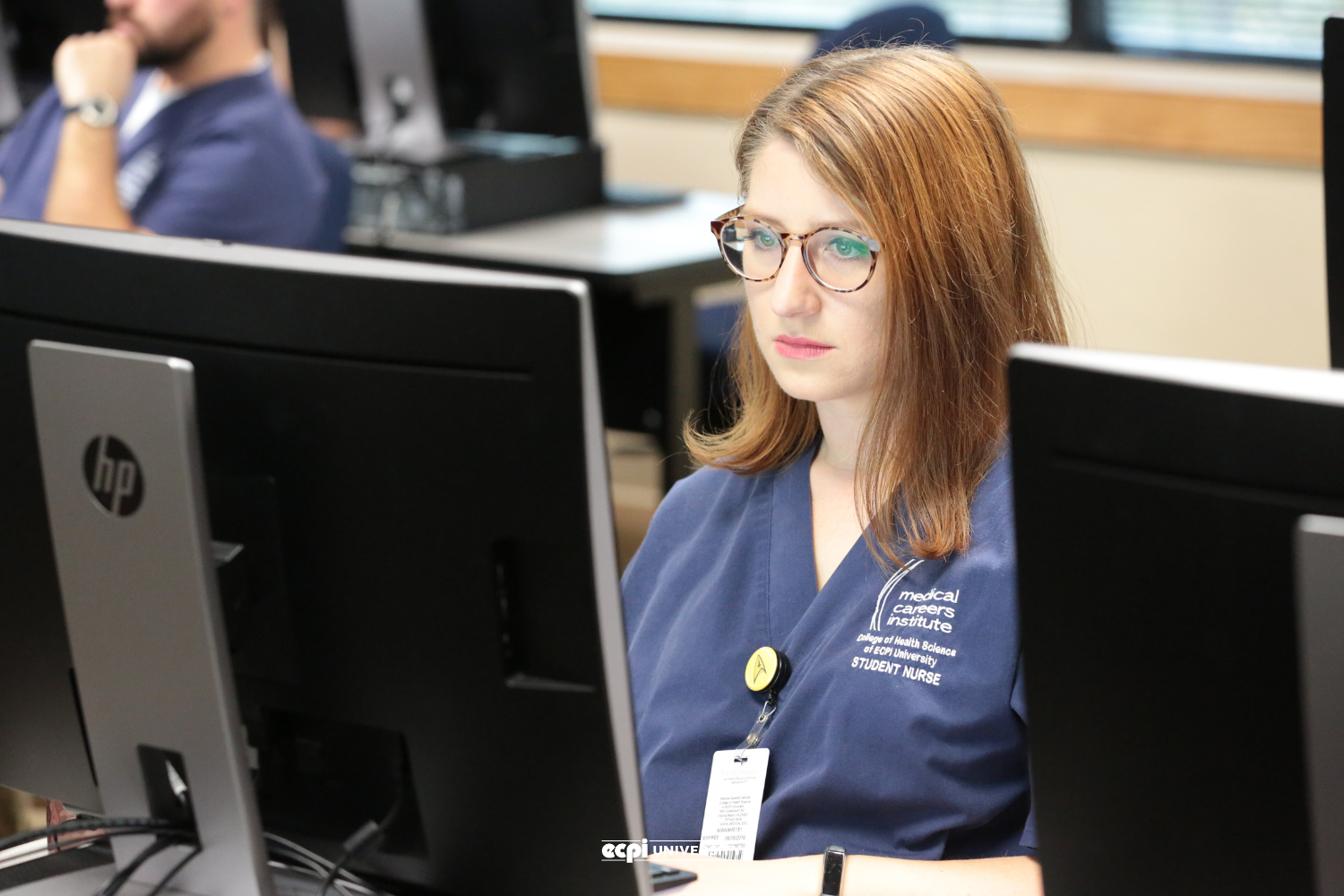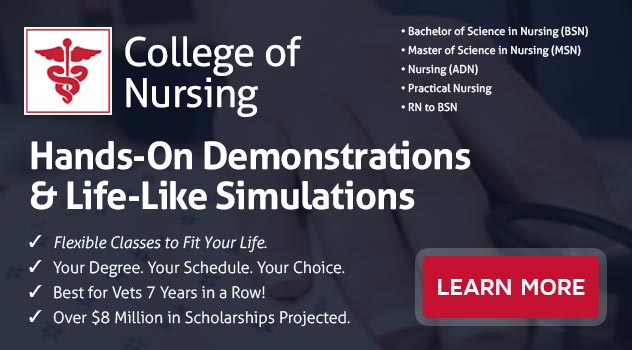
Nursing is both a profession and a calling. The act of caring for the sick, injured, or dying is truly an honorable service to dedicate oneself to. As their role is so critical in healthcare, nurses must attend nursing school and pass state licensure exams before practicing with patients. There are many levels of nursing education, but none so important as the fundamentals. Nursing fundamentals form the foundation of a nurse’s working knowledge, meaning that all further education is built atop this base. Without a solid understanding of these basics, nurses may be unable to properly assess patients, respond to their needs, administer medication, contain the spread of an infection in a facility, and much more. Let’s take a look at some key nursing fundamentals, like anatomy and physiology.
Anatomy & Physiology in Nursing
Anatomy and physiology are key aspects of nursing fundamentals, providing nurses with a comprehensive understanding of the structure and functions of the human body. This is essential for the work nurses perform: patient assessments, administering medication, controlling infection, monitoring hygiene, and of course, documentation.
Both anatomy and physiology help nurses understand the effects of medication and treatment, as well as identify possible side effects or complications.
What is Anatomy?
Anatomy is the study of the structure of the body and its internal organs. This branch of biology examines the physical structure of organisms and our various organs, tissues, cells, and systems, as well as how they work together. A strong foundational knowledge of anatomy is crucial to practicing any nursing—or administering medical care in any capacity.
As an example, nurses give shots or draw blood all the time. When administering a shot to a patient, the nurse must locate the correct muscle and injection site. This requires an understanding of the location and size of the muscle, as well as the nerves and blood vessels in the area. They must understand that there are many layers of tissue through which the needle must pass: skin, subcutaneous tissue, and fascia (which varies in thickness per the patient’s age, weight, and general health).
All of this knowledge is required to correctly penetrate the tissues, properly administer the medication or draw blood, and document completion of the process. This is one simple example of how a deep understanding of anatomy is crucial to nurses’ duties.
Overview of Human Anatomy
Each system in the anatomy performs a special and unique function:
- Skeletal System: Provides structure and support to the body, protects vital organs, and allows for mobility.
- Muscular System: Enables movement, maintains posture, and generates heat.
- Circulatory System: Circulates blood through the body, delivering oxygen and nutrients, and removes waste products.
- Respiratory System: Facilitates the exchange of oxygen and carbon dioxide between the body and the outside environment.
- Digestive System: Breaks down food into nutrients and eliminates waste products.
- Nervous System: Coordinates bodily functions, senses the environment, and allows for conscious thought and mobility.
- Endocrine System: Produces hormones that regulate bodily functions and maintain homeostasis (state of balance in bodily functions).
- Immune System: Defends the body against pathogens and other foreign substances.
- Urinary System: Eliminates waste and maintains fluid-to-electrolyte balance.
- Reproductive System: Facilitates the production and transport of gametes (sperm and eggs); allows for fertilization and reproduction.
What is Physiology?
Physiology is the study of how the body functions. This branch of biology explores the functions and processes of organisms and how different systems, organs, tissues, and cells work together to perform specific functions required by the body. Physiology also studies the mechanisms for maintaining homeostasis, responding to stimuli, and carrying out vital processes (metabolism, growth).
As an example, patients may suffer from different respiratory conditions but exhibit the same symptoms. A patient with asthma may have narrowed airways due to inflammation and increased mucus, while a patient with COPD may exhibit the same symptoms due to lung tissue damage or loss of elasticity. A thorough understanding of physiology can help nurses identify the source, determine the correct treatment, and relieve the symptoms.
This is one simple example of how extensive physiology education helps nurses care for patients and alleviate discomfort.
Overview of Human Physiology
From cellular to systemic, physiology encompasses a variety of bodily processes:
- Metabolism: Chemical processes that occur within cells to convert food into energy.
- Homeostasis: Internal stability in the body despite external environmental factors, through temperature regulation, blood pressure control, and acid-base balance.
- Hormonal Regulation: Controls bodily functions through hormones from endocrine glands.
- Neuronal Signaling: Transmits information between cells and allows for sensation, movement, and cognitive function.
- Muscle Contraction: Process by which muscle fibers generate force and produce movement.
- Circulation: Movement of blood through the body, delivering oxygen, nutrients, and hormones to cells.
- Respiration: Process by which oxygen is inhaled and carbon dioxide is exhaled from the lungs.
- Digestion: Breakdown of food into nutrients which the body can absorb through enzymes and muscular contractions.
- Immune Response: White blood cells and antibodies which defend the body against pathogens and foreign substances.
- Reproduction: Processes by which gametes are produced and fertilized, developing a new organism.
The Relationship between Anatomy and Physiology
Anatomy and physiology are closely related, and both are instrumental in healthcare. While anatomy focuses on the structure and organization of the living body, anatomy focuses on the functions and processes of living bodies.
The structure of the body determines how it functions, which in turn affects the structure. The fields are intertwined, both literally and metaphorically.
Consider your lungs. When you inhale oxygen, the structure of the lungs expand. When you exhale carbon dioxide, the structure of the lungs contract. There is a lot of anatomy and physiology in every breath you take!
Understanding the relationship between anatomy and physiology is crucial for any nursing student. Here is a look at how some common nurses’ duties are helped along by this dynamic biological duo:
- Assessment: To accurately assess a patient’s condition, nurses must know where various organs and systems are located, how they function, and how to identify abnormalities.
- Diagnosis: Identifying and diagnosing health problems based on assessments is predicated on a strong foundation of anatomy and physiology. Once the underlying cause is determined, a care plan can be developed.
- Treatment: Selecting the appropriate treatment and administering the medication properly and safely is only possible with a thorough understanding of anatomy and physiology.
- Patient Education: Nurses are often responsible for educating patients regarding their condition, medication, and treatment.
- Collaboration: Working with physicians, pharmacists, physical therapists, and other healthcare professionals is much easier when you all speak the same lingo. Anatomy and physiology can act as a form of verbal shorthand when you need to communicate clearly and quickly.
Nurses who understand both anatomy and physiology provide better quality care that is tailored to the patient’s unique conditions and needs, resulting in more positive health outcomes for nurses, their patients and healthcare facilities.
Practical Applications for Nurses
Anatomy and physiology are essential components of the nursing field. By understanding both, nurses are able to assess and diagnose health conditions, develop treatment plans, and provide personalized care to patients.
None of the following would be possible without a deep knowledge of anatomy and physiology:
- Personalized treatment care plans for patients
- Safe and effective administration of medication
- Treatment results and efficacy; adjustments as needed
- Explaining health conditions and treatment plans to patients
Ongoing Education for Nurses
As technology advances, so does our understanding of the human body. New equipment will lead to new revelations, which is why it is important for nurses to commit to ongoing education and training. A brief overview of the types of nursing degrees available:
- Practical Nursing Diploma (PN): a simple diploma program with NCLEX preparation included, this is a quick, entry-level education in the basics of nursing.
- Associate Degree in Nursing (ADN): a common first step into the field of nursing, an ADN includes all the necessary nursing fundamentals as well as NCLEX preparation.
- Bachelor of Science in Nursing (BSN): considered the “standard” level of education for a professional nurse, a BSN could be earned in as little as 2.5 years at certain schools.
- Master of Science in Nursing (MSN): an advanced nursing degree; many nurses work for years before returning to earn their master’s. Nurses pursuing their master’s degrees usually have two choices of concentration:
- Family Nurse Practitioner (F/NP): taking on more responsibility in patient care
- Nurse Educator (NE): training the next generation of nurses
Many nurses choose to take courses or pursue a new nursing degree, attend professional nursing conferences, or DIY (read research articles, watch instructional videos, engage with other healthcare professionals).
Are You Ready to Get Physical?
Learning about our physical bodies is a fascinating endeavor. Nurses not only hold the key to this knowledge, they also save lives and brighten days! If you’re still reading and you’re picturing yourself as a professional nurse, consider enrolling at ECPI University’s College of Nursing. We offer a variety of accelerated nursing degrees that can be completed fast. You could become a master of anatomy and a champion of physiology, with a nursing degree from ECPI University. It could be the BEST Decision You Ever Make!
DISCLAIMER - ECPI University makes no claim, warranty, or guarantee as to actual employability or earning potential to current, past or future students or graduates of any educational program we offer. The ECPI University website is published for informational purposes only. Every effort is made to ensure the accuracy of information contained on the ECPI.edu domain; however, no warranty of accuracy is made. No contractual rights, either expressed or implied, are created by its content.



